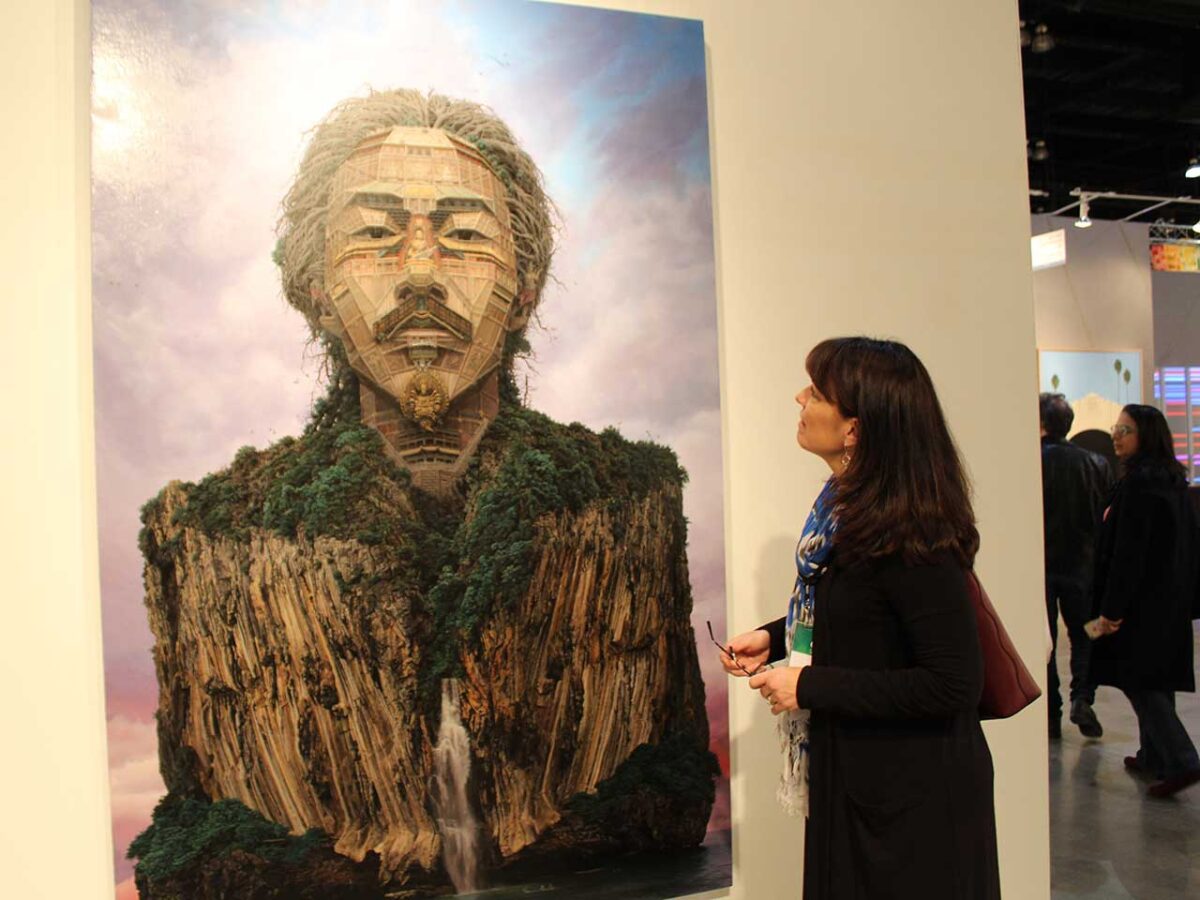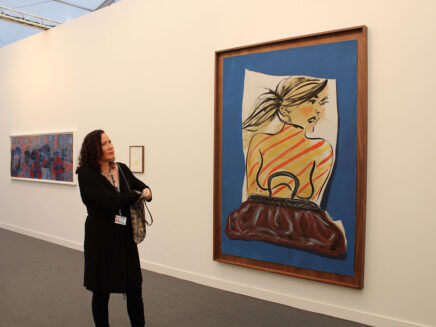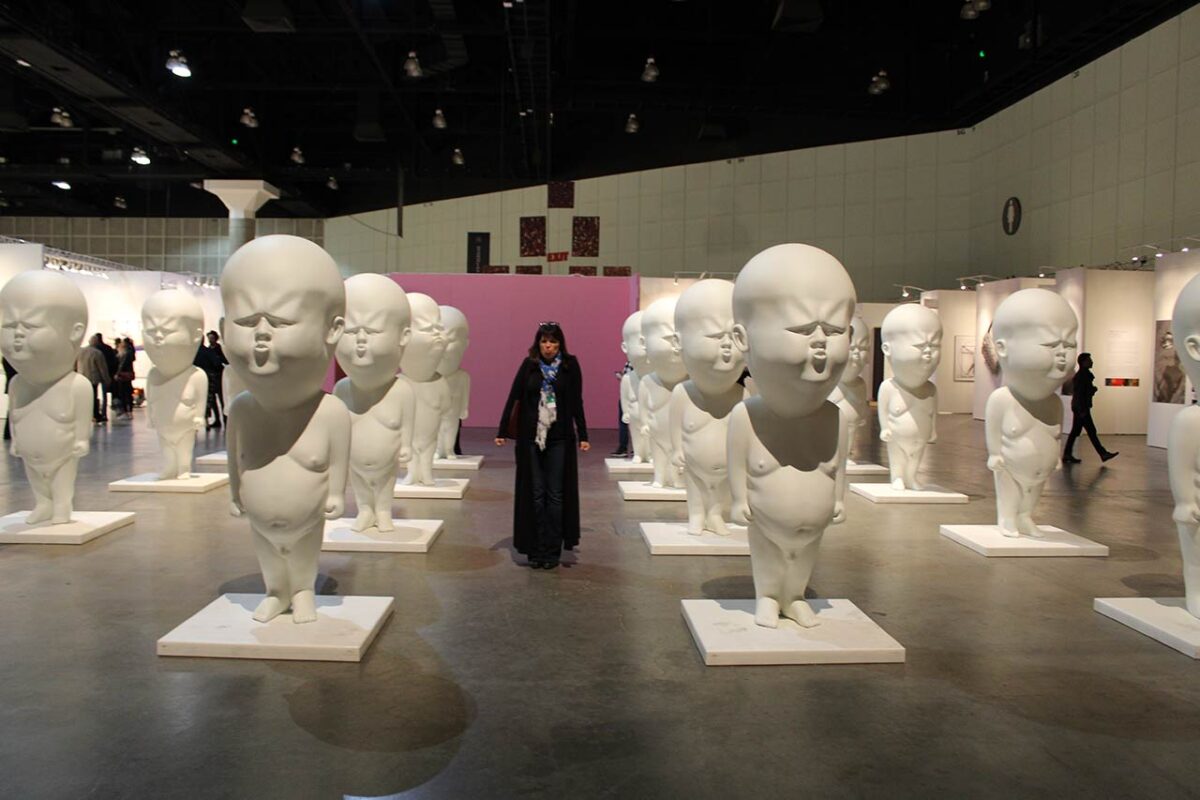
by Natalie Durkin
I was raised by chefs so I know how to cook, though I don’t show off my knowledge much. I love prosciutto. My favorite restaurant is Taix in Echo Park.
My family. They allowed me to follow my creative passions and I try not to make them think I made a big mistake.
My favorite painting I made is called The Naughty Doppler. It still amazes me every time I see it.

by Deborah Granger
My work evolves from an inquiry into the nature of my materials, my working process, and the paper itself. What I learn from my media I use as a frame of reference for the real world. The pieces in the River Rocks series express some of the common ground shared by natural processes and my art-making methods.

by Deborah Granger
The Devastation Series – by representing and replicating natural process on static works of art and juxtaposing the artwork with the processes at work in nature, underscores the current environmental crisis. The video shows how the work was inspired by nature and also imbues the artwork (which endures after the moving images on the screen are gone) with the power and magnitude of what has been revealed.
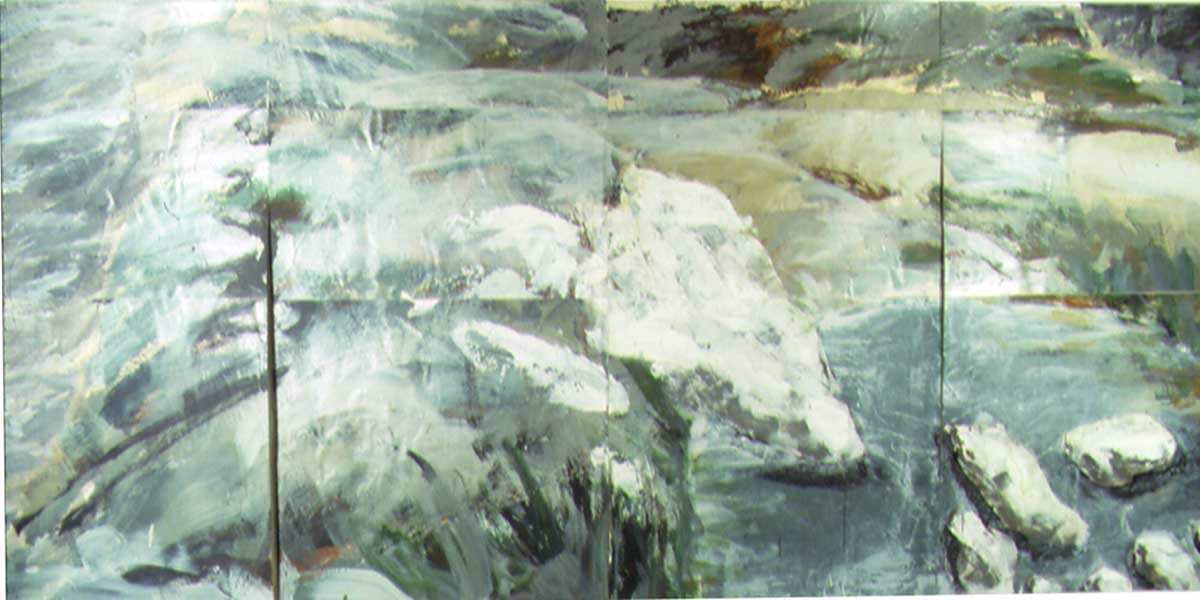
by Deborah Granger
Since I have been a lifetime student of classical music (piano), which involves an understanding of music composition, it occurred to me that musical compositions are built upon patterns of theme and variation. Since that epiphany, I have structured several works on classical music forms.
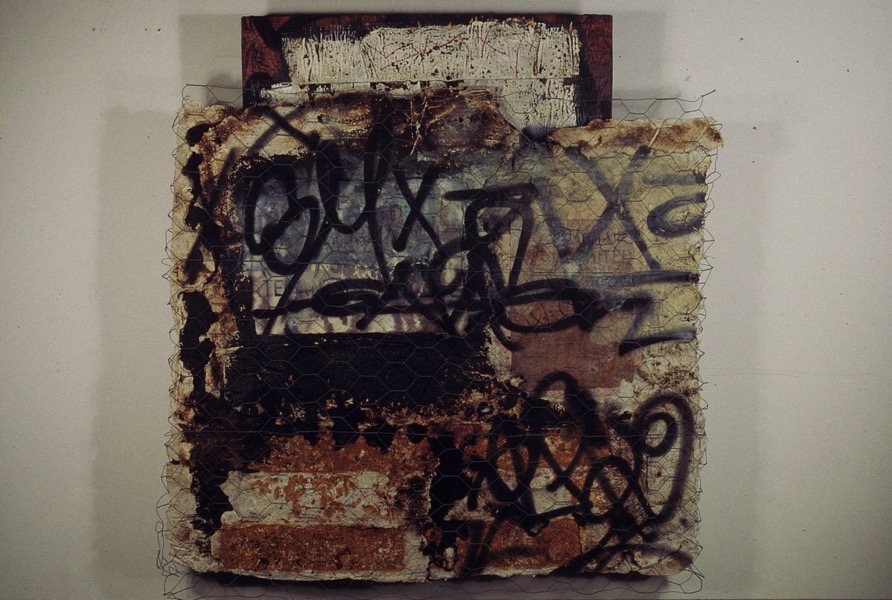
by Deborah Granger
Multiple layers of paper were collaged creating two separate structures divided by the chicken wire, which supports the front layer. The many layers of papers and the obliterated graffiti testify to a long history of the wall. Wile the bold graffitii Eric Fisher painted seems to dominate the piece, it has a lot of competition from the wall surfaces.
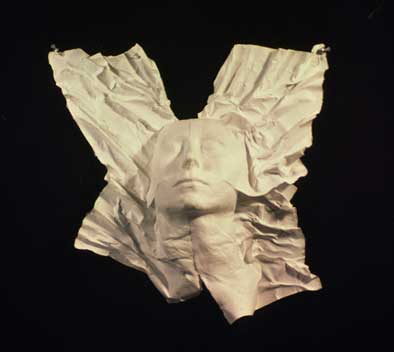
by Deborah Granger
This is one of a series of 15 pieces cast from a plaster of Paris mold of my face in 1985. The series demonstrates the hidden qualities of Hosho, a paper used in Japan for wood block printing, which I discovered is capable of picking up fine detail from the mold when wet, and retaining the form when dry. The rectangular format reminds the viewer of the original sheet of paper and the “paper-ness” of the sculpture.







